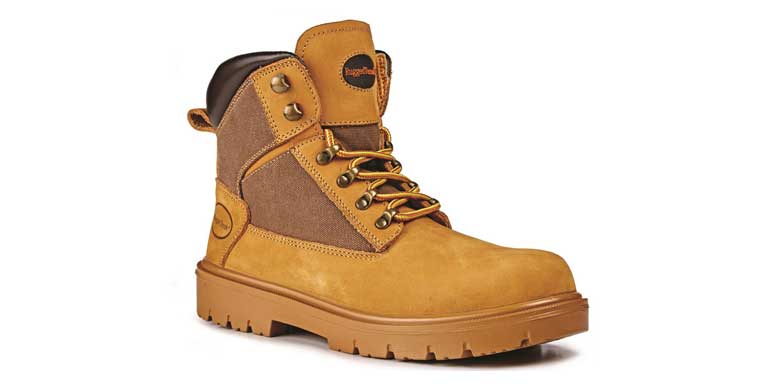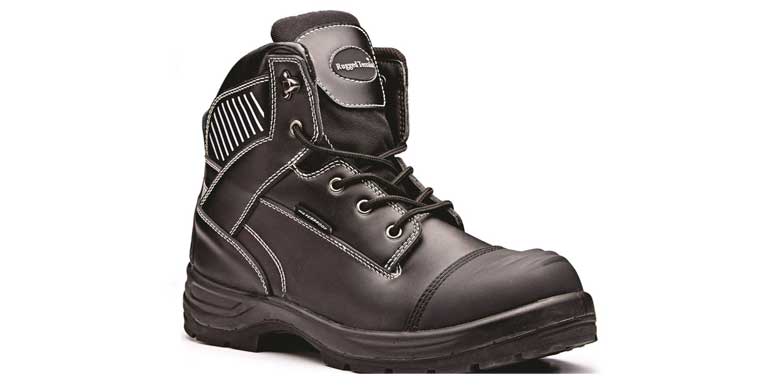Steel Toe vs Composite Toe Boots

Safety work boots or safety shoes are designed to protect your feet from injury in the workplace. One of the primary components found in safety footwear is the toe cap, which reinforces the shoe to protect against impact on the toes. Read on for a brief overview of safety footwear as well as a comparison of steel and composite toe caps.
What Is Safety Footwear?
Safety footwear is designed to be worn in working environments where there is an increased health and safety risk. These can include building sites, warehouses, kitchens and more. We stock a range of safety boots and shoes designed for use in a variety of environments that protect against a range of different hazards.
For example, we stock waterproof safety boots to protect against water ingress, metal free boots for high security environments, a range of safety shoes for women and more!
What Standards Does Safety Footwear Need to Comply to?
The Health and Safety at Work Act (1974) specifies that work environments should be subject to regular risk assessments. These are performed to ensure that staff working in these environments are equipped with the safety workwear or Personal Protective Equipment (PPE) necessary to mitigate the risks they may face. PPE can include hard hats, gloves, respiratory equipment, safety clothing and safety footwear. There is a European standard EN ISO 20345 – 2011 which dictates the safety requirements for each.
Any safety footwear you purchase should be clearly labelled with the safety standards it adheres to. You can learn more about the different standards and additional safety features found in safety shoes and boots in our Guide to Safety Footwear.
If your work environment carries the risk of heavy items falling or rolling onto the feet, you should wear ‘Safety Basic’ or SB safety footwear as a minimum. This is the safety standard that forms the foundation of all safety shoes, boots and trainers.
Footwear that reaches SB safety standards features a steel or composite toe cap that is able to withstand a 200-joule impact. A 200-joule impact is the equivalent of 22.7kg (or 50lbs) falling onto the foot from a height of 56cm. The SB standard also dictates that the footwear be able to withstand a weight of 1.5 tons resting on the toe area.

What Are Steel Toe Boots?
Steel toe boots are work boots that feature protective steel toe caps. Steel has been the material of choice for toe protection since the 1930s thanks its strength, resilience and longevity.
What Are the Benefits of Steel Toe Caps?
- Strength – Steel is stronger than composite materials. This means a thinner layer of steel is required to achieve the same level of protection.
- Penetration – Thanks to this increased strength, steel toe caps offer greater protection against penetration from screws or nails.
- Value for Money – Steel toe work boots are cheaper produce, which generally means that boots with steel toe caps are cheaper to buy too.
- Above and Beyond – Steel toe caps tend not only to meet but rather exceed the standards set out by EN ISO 20345 – 2011
What Are the Cons of Steel Toe Caps?
- Uncomfortable – Steel is heavier than composite, which means steel toe boots can become uncomfortable for the wearer. You may need to wear bandages or thick socks to alleviate this.
- Conductive – Steel is of course an excellent conductor of electricity, meaning steel toe boots are not ideal as protection against shocks or static charges.
- Metal – Steel toe safety boots will set off metal detectors. This isn’t ideal if you’re working in a high-security environment such as an airport

What Are Composite Toe Boots?
Composite toe caps are made up of several different metal-free materials. These can include thermoplastic polyurethane (TPU), carbon fibre, fibreglass or Kevlar. Composite toe caps are becoming increasingly popular for many reasons, as outlined below.
What Are the Benefits of Composite Toe Caps?
- Comfort – Footwear with composite toe caps tends to be lighter and much more comfortable. They’re often found in sportier styles of safety footwear such as safety trainers.
- Non-Conductive – Composite materials do not conduct electricity, making them safer in an environment with electrical hazards. If you’re looking for safety shoes specifically for this however, look out for safety footwear rated “ESD”.
- Temperature – As they are non-conductive, composite toe boots tend to remain a more comfortable temperature throughout the day.
- Metal – As they don’t contain anything that will set off metal detectors, shoes with composite toe caps are perfect for airports or other high-security environments.
What Are the Cons of Composite Toe Caps?
- Expensive – Composite toe cap boots tend to be more expensive due to the manufacturing process and because they tend to be found only in higher-spec boots.
- Hard to Find – Steel toe cap boots are far more common and easy to find anywhere.
Both types of toe cap have great advantages when used in work boots. No matter your choice, the most important thing is to properly care for and maintain your safety footwear. Always ensure that the safety shoes, boots or trainers you buy comply with safety requirements set out by your workplace.
More Information on Composite vs Steel Toe Cap Safety Footwear
If you’re unsure of which type of safety boots or safety shoes is relevant for you, our friendly customer service team can be reached on 01295 565 565, via the live chat, or by emailing [email protected]. They’ll help you pick the ideal solution whilst keeping the cost of your project low!
We’re also sharing more inspiration and exclusive discounts across social media. This includes Facebook, Instagram, and Twitter too.